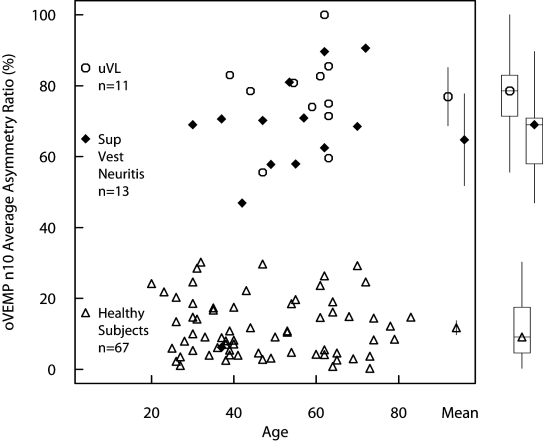Fig. 4.
The asymmetry ratio of all 13 patients with superior vestibular neuritis (filled diamonds) plotted as a function of age. Also on this graph are the data points from earlier published data from our laboratories 4-6 showing the asymmetry ratios of 67 healthy subjects (open triangles) and 11 patients with complete unilateral vestibular loss (open circles). The mean values and two-tailed 95% confidence intervals for the mean are shown within the square while the boxplots for the medians, quartiles and ranges are shown outside the square. All patients showed an asymmetry ratio greater than any of the normal subjects tested, and the similarity of the AR results for SVN and uVL patients is clear.

